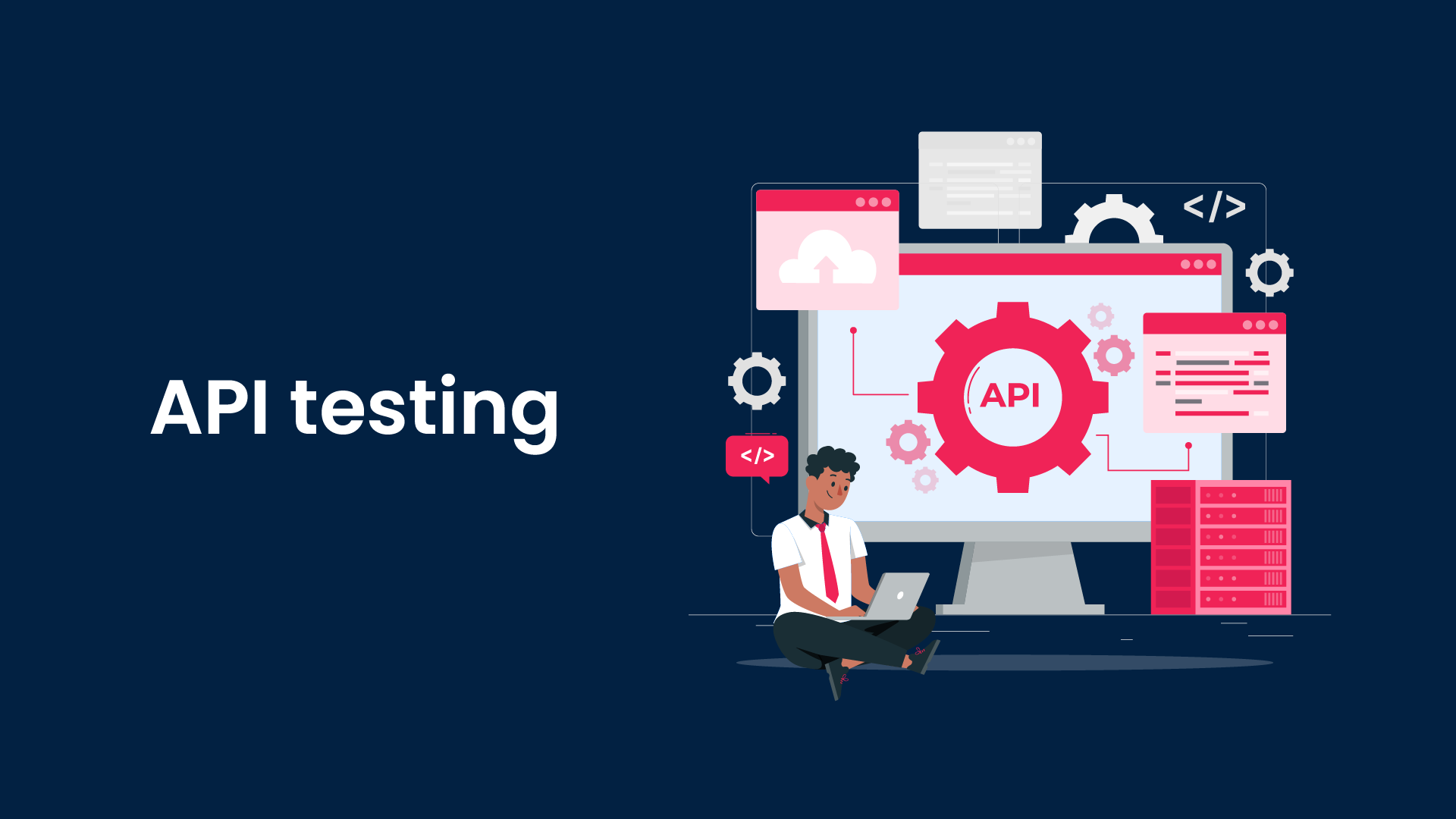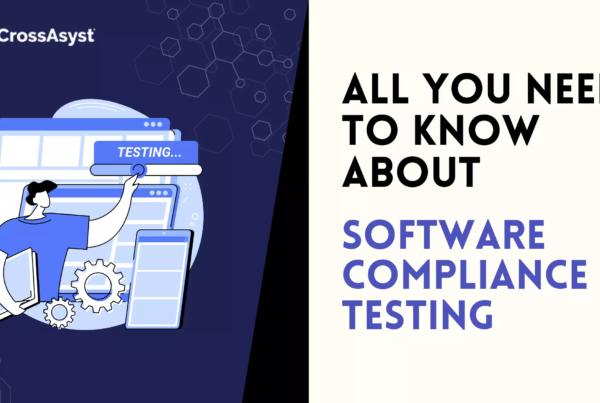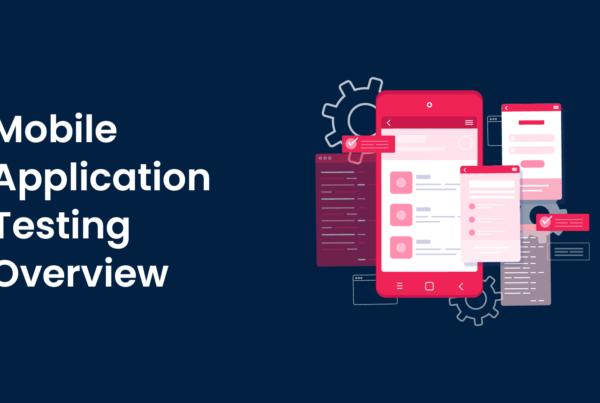API testing, an integral aspect of software development, is the process of evaluating APIs for functionality, performance, security, and reliability. APIs (Application Programming Interfaces) serve as the bridge between different software components, enabling seamless communication and interaction. Ensuring the effectiveness of APIs is paramount in guaranteeing the overall functionality and reliability of applications.
Table of Contents
Importance of API Testing
Here is a more detailed look at why API testing is an important part of software development.
 1. Early Bug Detection
1. Early Bug Detection
API testing serves as a proactive measure in software development by detecting bugs at an early stage of the development lifecycle. By conducting thorough tests on APIs, developers can identify and rectify potential issues before they escalate into critical problems during production. This approach minimizes the risk of costly fixes and ensures a smoother development process.
2. Seamless Integration
One of the key advantages of API testing is its ability to ensure seamless integration between different software components. By rigorously testing APIs for compatibility and interoperability, developers can guarantee that various modules and systems can communicate effectively and exchange data without any hiccups.
This promotes synergy among different parts of the application architecture, leading to a more cohesive and robust software ecosystem.
3. Facilitating Communication and Data Exchange
API testing plays a crucial role in facilitating communication and data exchange between software components. By validating APIs through testing, developers can verify that data is transmitted accurately and efficiently between different systems.
This ensures that crucial information reaches its intended destination without loss or corruption, thereby enhancing the overall reliability and performance of the application.
4. Timely Feedback Loop
Early API testing provides teams with timely feedback on the functionality and reliability of the APIs being developed. By promptly identifying and addressing issues during the testing phase, developers can streamline the development process and prevent potential roadblocks later on.
This iterative feedback loop enables teams to make informed decisions and prioritize tasks effectively, leading to faster development cycles and higher-quality deliverables.
5. Efficient Issue Resolution
By uncovering issues early in the development process, API testing enables teams to address them promptly and efficiently. This proactive approach minimizes the time and effort required for debugging and troubleshooting later stages of development.
Additionally, early issue resolution reduces the likelihood of last-minute hiccups and ensures a smoother deployment process, ultimately leading to greater customer satisfaction and retention.
API Testing Best Practices
Here are some best practices to help make API testing easier and more efficient.
 1. Test Case Design Principles
1. Test Case Design Principles
Comprehensive test case design forms the cornerstone of effective API testing. Test cases must encompass a diverse range of scenarios to ensure thorough validation of API functionality. This includes positive inputs to verify expected behavior, negative inputs to assess error handling capabilities, boundary conditions to test limits, and various error scenarios to gauge the robustness of the API’s error handling mechanisms.
By encompassing these scenarios, testers can uncover potential vulnerabilities and ensure that the API behaves as expected across different conditions and inputs.
2. Handling Authentication and Authorization
Ensuring secure API access requires meticulous testing of authentication and authorization mechanisms. Test scenarios should encompass validation of different authentication methods such as OAuth, JWT, or API keys, ensuring that each method functions correctly and securely.
Additionally, testing should cover various user roles and permissions to verify that access controls are enforced accurately. By rigorously testing authentication and authorization processes, testers can identify and rectify security vulnerabilities, safeguarding sensitive data and protecting the integrity of the system.
3. Data-Driven Testing Approaches
Data-driven testing empowers testers to evaluate API behavior with multiple input values, uncovering potential issues related to data handling and processing. Test scenarios should encompass a diverse set of input data, including valid, invalid, and edge case values, to validate the API’s response under different conditions.
By employing data-driven testing approaches, testers can identify data-related vulnerabilities such as input validation errors, data corruption issues, or unexpected behavior, ensuring the robustness and reliability of the API under varying data conditions.
4. Error Handling Strategies
Effective error handling is critical for maintaining the reliability and resilience of APIs. API testing should include scenarios to evaluate how the API handles errors and exceptions under different conditions.
Test cases should encompass scenarios such as invalid input data, network errors, or server failures to assess the API’s ability to gracefully degrade and provide informative error messages.
By testing error handling strategies comprehensively, testers can ensure that the API maintains stability and usability even in the face of adverse conditions, enhancing the overall user experience and system reliability.
5. Performance and Load Testing Considerations
Performance testing evaluates an API’s responsiveness, throughput, and scalability under varying load conditions. Test scenarios should simulate realistic user traffic and workload to identify performance bottlenecks and scalability limitations.
By assessing factors such as response time, latency, and resource utilization, testers can pinpoint areas for optimization and ensure that the API can handle expected levels of traffic without degradation in performance.
Early identification of performance issues allows developers to optimize the API’s architecture and implementation, ensuring optimal performance and scalability in production environments.
6. Security Testing Guidelines
Security testing is essential for identifying and mitigating vulnerabilities that could compromise the confidentiality, integrity, and availability of API resources. Test scenarios should encompass a range of security vulnerabilities, including injection attacks, broken authentication, and sensitive data exposure.
By employing techniques such as penetration testing, fuzzing, and vulnerability scanning, testers can uncover security weaknesses and ensure that the API adheres to security best practices. Implementing robust security testing guidelines helps safeguard sensitive data, protect against malicious attacks, and build trust with users and stakeholders.
Tools for API Testing
API testers use a variety of tools to streamline the testing process and validate API functionality effectively. Here’s a quick look at some of the most commonly used API testing tools.
1. Postman
Postman stands out as a widely acclaimed API testing tool renowned for its user-friendly interface and robust feature set. Its versatility extends beyond testing, encompassing automated testing, seamless collaboration among team members, and the generation of comprehensive API documentation.
Its intuitive interface empowers testers to conduct tests efficiently, while features like collections streamline the testing process, enhancing productivity and ensuring thorough API validation.
2. SoapUI
SoapUI emerges as a comprehensive testing solution tailored specifically for SOAP and REST APIs. Its rich array of features includes functional testing, load testing, and assertion scripting, offering testers unparalleled flexibility in validating API behavior.
With SoapUI, testers can simulate real-world scenarios, assess performance under varying loads, and verify compliance with predefined expectations, thereby ensuring the reliability and robustness of APIs across diverse use cases.
3. Rest-Assured
Rest-Assured, a Java-based library, is dedicated to testing RESTful APIs. It distinguishes itself with its domain-specific language (DSL), enabling testers to craft concise and expressive API tests with ease.
Its seamless integration with Java frameworks facilitates efficient test automation, empowering teams to streamline the testing process and accelerate time-to-market without compromising on quality.
4. Swagger
Swagger emerges as a versatile open-source framework encompassing API design, documentation, and testing capabilities. Its interactive interface simplifies API exploration and testing, enabling testers to validate API endpoints and responses effortlessly.
With Swagger, teams can ensure API consistency, facilitate seamless communication among stakeholders, and expedite the development process through comprehensive API documentation and testing.
5. Karate DSL
Karate DSL represents a powerful API testing tool that combines testing, mocking, and automation within a single framework. Its intuitive syntax simplifies the creation of complex test scenarios, enabling testers to validate API functionality effectively.
By integrating testing and automation, Karate DSL enhances productivity, accelerates testing cycles, and fosters collaboration among team members, thereby ensuring the delivery of high-quality APIs with minimal effort.
6. Newman
Newman emerges as a command-line tool designed for executing Postman collections, making it an ideal choice for seamlessly integrating API testing into CI/CD pipelines. Its command-line interface facilitates automation and enables testers to execute tests in headless environments efficiently.
By leveraging Newman, teams can incorporate API testing seamlessly into their development workflows, fostering continuous integration and delivery practices while maintaining a focus on quality and reliability.
7. JMeter (for performance testing)
Apache JMeter stands as a versatile tool revered for its prowess in performance testing of APIs. With its capability to simulate heavy loads and analyze performance metrics, JMeter enables testers to identify performance bottlenecks and scalability issues effectively.
By assessing API response times, throughput, and resource utilization under various load conditions, teams can optimize performance, enhance scalability, and ensure the responsiveness of APIs, thereby delivering an exceptional user experience.
Strategies for Effective API Testing
Effective API testing is essential for ensuring the reliability and performance of software applications. To achieve this, testers employ a variety of strategies aimed at enhancing the testing process and delivering high-quality APIs. Let’s explore some key strategies for effective API testing and how they address common challenges in the testing landscape.
 1. Test Automation Techniques
1. Test Automation Techniques
Automating API tests streamlines the testing process, ensuring repeatability, scalability, and efficiency. By automating repetitive test cases, testers can focus on more complex scenarios and accelerate the delivery of reliable APIs.
2. Continuous Integration and Delivery (CI/CD) Pipelines
Integrating API testing into CI/CD pipelines enables early detection of issues and ensures consistent quality throughout the development lifecycle. By automating tests within the development workflow, teams can identify and address issues promptly, leading to faster delivery and improved software quality.
3. Mocking and Stubbing
Mocking and stubbing techniques allow testers to simulate dependencies and external services, enabling isolated testing of APIs. By decoupling dependencies during testing, teams can identify and resolve issues without impacting other components, leading to more efficient testing and improved test coverage.
4. Contract Testing
Contract testing verifies the compatibility and consistency of APIs by validating against predefined contracts or specifications. By defining clear contracts between API providers and consumers, teams can ensure that APIs meet expectations and maintain compatibility, reducing the risk of integration issues and improving overall system reliability.
5. API Versioning Strategies
Effective API versioning ensures backward compatibility and smooth transitions for consumers, minimizing disruptions during updates. By adopting clear versioning strategies and communicating changes effectively, teams can mitigate risks associated with API updates and ensure a seamless experience for end-users.
Challenges and Solutions in API Testing
Let’s now dive into some commonly faced challenges and their solutions in the process of API testing.
1. Handling Dynamic Data
APIs often deal with dynamic data, such as timestamps or unique identifiers, which can make testing complex and unpredictable.
To deal with this, testers employ parameterization techniques to handle dynamic data effectively. By parameterizing test inputs, such as replacing static values with variables, testers can create more flexible and reusable test cases.
Additionally, data-driven testing approaches allow testers to iterate through various datasets, covering a wide range of scenarios and ensuring thorough validation of API behavior under dynamic conditions.
2. Managing Dependencies
APIs frequently rely on external dependencies, such as databases or third-party services, which can introduce complexity and dependencies into the testing environment.
Mocking and stubbing techniques are utilized to manage dependencies effectively during API testing. By creating mock objects or stubs that mimic the behavior of external dependencies, testers can isolate the API under test and control its interactions with external systems.
This enables more focused and deterministic testing, reducing the reliance on external resources and facilitating faster test execution.
3. Ensuring Comprehensive Test Coverage
Ensuring comprehensive test coverage across all aspects of an API, including various endpoints, input combinations, and error scenarios, can be challenging and time-consuming.
Testers deal with this by prioritizing critical test scenarios based on risk analysis and business requirements to ensure efficient use of resources and maximize test coverage. By identifying high-impact scenarios and focusing testing efforts on areas with the highest potential for failure, testers can prioritize test execution and allocate resources effectively.
Additionally, automation of repetitive test cases enables testers to achieve broader test coverage and identify regression issues quickly, ensuring the reliability and robustness of the API.
Enjoy Unparalleled API Testing Services With Crossasyst
If you’re looking for reliable, data driven API testing across your tech stack, our testing team at CrossAsyst has you covered. Our experienced team uses some of the best API testing technologies, including Postman, RestAssured, JMeter andSwagger UI, along with monitoring tools like Datadog and AWS Canary, ensuring robust, data centric testing solutions.
Contact CrossAsyst today, and learn more about our QA and test automation offerings. Join our family satisfied customers from around the world.




